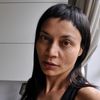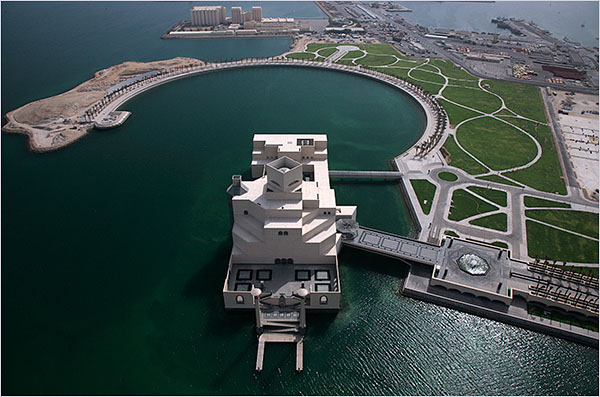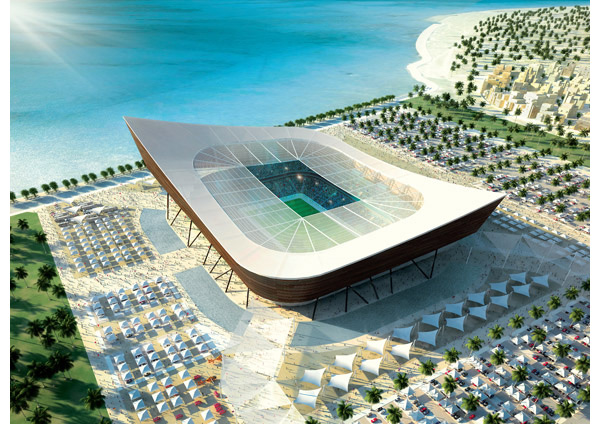
The proposed Al-Shamal Stadium for 2022 WorldCup. Expected capacity: 45,120 Photograph: Qatar 2022 Bid Committee
Qatar, once a pearl-fishing port and the poorest of Gulf states, has after years of oil production, grown into one of the richest of countries with the second highest per-capita income (after Liechtenstein), and it has become an epicentre of art and culture in the Middle East. Mathaf: Arab Museum of Modern Art (in Arabic "mathaf" means museum) opened in December, 2010 in Doha, Qatar, culminating a decade of successful funding and expansion of the arts in the Middle East. Qatar, which already has the I.M. Pei-designed Museum of Islamic Art in Doha, is also in the process of completing several other museum projects and a controversial new stadium.
A new National Museum of Qatar is being rebuilt around the original early 20th century palace of Sheikh Abdullah bin Jassim Al-Thani by French architect Jean Nouvel, scheduled to open in 2014. Rising out of the desert, the cascading plates of the museum's new organic façade will be built at the edge of a lagoon to celebrate the culture of Qatar's past, and ostensibly, showcase its current prosperity.
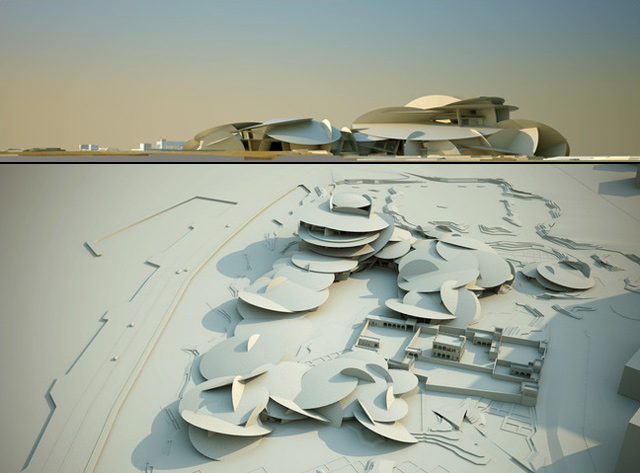
Renderings of Jean Nouvel's National Museum of Qatar planned for 2014
The new Emir of Qatar, Sheikh Hamad bin Khalifa Al Thani's vision was to mold tiny Qatar into a centre of world culture, and the newly-opened-Mathaf's major challenge to Middle Eastern art will be to push the boundaries of Arab taboos - by their ability to display nudity and politically sensitive subjects without censorship. Qatar already has set precedence among the Gulf states with its democratic use of media, and Qatar Media Corporation owns the much respected Al Jazeera international news network, which is headquartered in Doha, Qatar. Also taking a lead role, unusual for most women in the Middle East, is HE Sheikha Al Mayassa bint Hamad bin Khalifa Al-Thani, the second of the Emir's three wives, who as Chairperson of the Qatar Museums Authority, spearheads the country's cultural expansion and move towards preserving its cultural heritage.
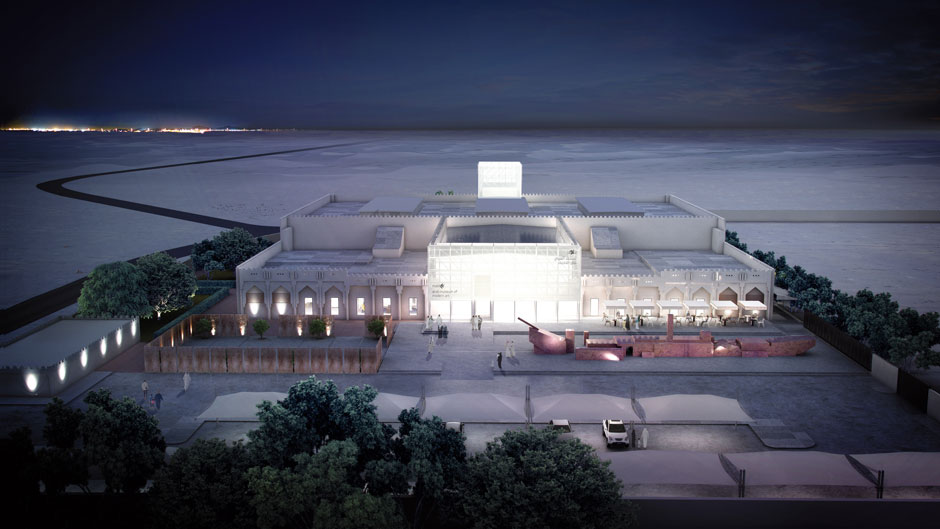
Mathaf: Arab Museum of Modern Art © Mathaf: Arab Museum of Art
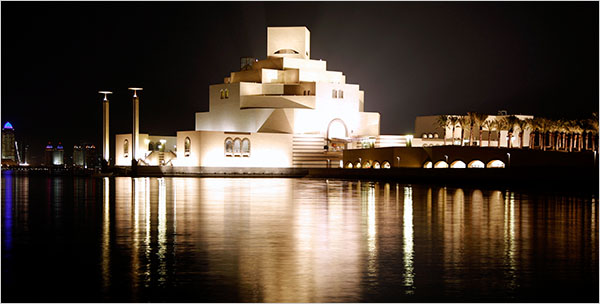
I. M. Pei designed Museum of Islamic Art at Doha, Qatar - Hassan Ammar/Associated Press
The Museum of Islamic Art in Doha, Qatar is built on a man-made island. Photo: Keiichi Tahara
Besides money flowing into the arts and new pride in a national identity, the resurgent interest in soccer in the Middle East had also empowered Qatar's bid to compete with giant nations in bidding for the 2022 World Cup, which it won according to the announcement on December 2nd 2010. The necessity of building an air-conditioned stadium in the middle of a desert has led to a lot of questions on environmental efficacy. Qatar has one of the world's highest carbon dioxide emission rates (higher than the U.S.) because of its liberal energy use, (Qataris pay no income taxes) and irrigating the desert to sustain the high level of lifestyle expected, generates an environmental toll. It remains to be seen whether the new developments will be but castles in sand or the new integration of environment technologies will create sustainable architecture for the future.
The design proposals for the new stadium can be viewed here and in the video below.
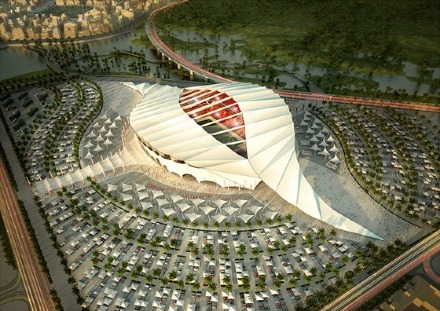
Al-Khor Stadium in Al-Khor. Proposal. Expected capacity: 45,330 Photograph: Qatar 2022 Bid Committee
Text:Kisa Lala
Editor in Chief of Spread ArtCulture Magazine
Spread ArtCulture
